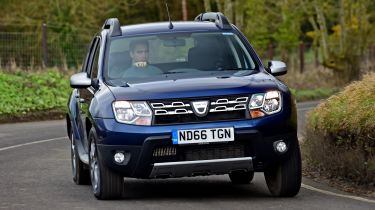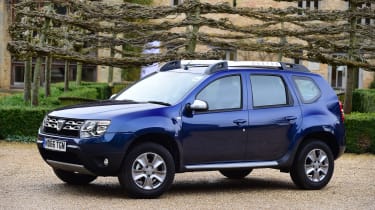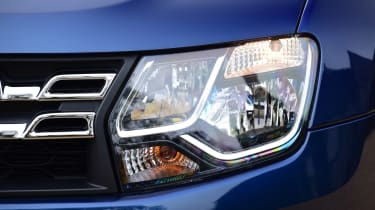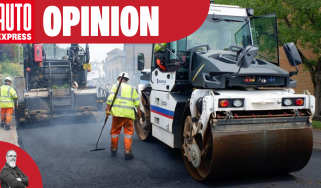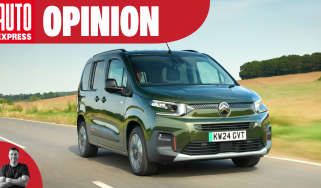Dacia Duster (2009-2017) review - Engines, performance and drive
A simple engine choice and a straightforward drive: the best engine is the diesel, and Dacia’s trim line-up reflects this

The Dacia Duster is a simple, straightforward car and this is reflected in the way it drives. If you’re looking for something a bit more engaging, look to the Ford Focus: the approach here is focused on delivering a decent ride and safe, foolproof handling, rather than the ultimate in driver enjoyment.
Long-travel suspension and a soft set-up mean the car absorbs bad bumps with greater composure than its rivals, sailing down the road where the Tivoli would skip over the surface. It does mean there’s some significant body roll in bends. Hit a bump, and the Dacia’s steering kicks back fiercely, shaking the car off your chosen cornering line. The wheel also weights up significantly in corners. It means you can actually feel what’s going on with the tyres, but it’s best to make the most of the Duster’s comfortable ride at a slower pace, where the car makes more sense.
At a more leisurely cruise, the Dacia’s quirks give it plenty of character that makes it a likeable 4x4, and although it’s not the best off-roader around, these drawbacks don’t require too much of a sacrifice – especially at this price.
Early UK-market Dusters didn’t have ESP as standard, a major safety omission. All 2015 cars now have it as standard though, and there’s a Nissan-derived three-mode 4WD system available across the range if you want the security of extra traction. There's a smooth-shifting dual-clutch automatic version too, but it's front-wheel drive only.
Used - available now

2022 Dacia
Duster
34,799 milesManualDiesel1.5L
Cash £15,642
2021 Dacia
Duster
51,711 milesManualDiesel1.5L
Cash £11,395
2019 Dacia
Duster
72,572 milesManualPetrol1.6L
Cash £8,000
2022 Dacia
Duster
19,270 milesManualPetrol1.0L
Cash £13,495The high seats and raised stance mean the Duster is a confidence-inspiring drive in the city, although the budget car does still lag behind pricier rivals in its lack of safety assist tech – emergency auto-braking is unavailable, for example. Rear parking sensors are a dealer-fit option: front sensors are not offered by Dacia.
Engines
The engine choice is pretty simple for the Duster range: it starts with a 108bhp 1.6-litre normally-aspirated petrol engine that’s available only in the Access entry model. A 109bhp 1.5-litre dCi diesel is available across the range, while top Laureate and Prestige models are now also offered with a 124bhp 1.2-litre turbo four-cylinder petrol.
The diesel is easily the best option. The Renault-sourced unit can be a bit gruff under acceleration, but it’s a decent performer with lots of pull at the bottom of the rev range and ample strength to pull a family of five, especially because the Dacia isn’t very heavy, weighing a relatively low 1,325kg. You don’t have to keep changing gear to maintain progress, and the six-speed gearbox itself is light and easy; this helps keep engine noise under control when cruising. Short gearing means that the Duster hits the rev limiter in third before the car has reached 50mph, while the similarly short first gear is useful for off-road work in the 4x4 version. The dual-clutch auto detracts from the Duster's no-frills appear somewhat, but it's is a good box, so for some the £1,000 premium will be worth it.
The 1.6-litre engine is harder work. Despite being faster than the diesel Duster on paper (0-62mph is quoted at 11.0 seconds, compared to 11.8 seconds for the diesel), it feels flat on the road because it has to be revved: it has 60% less pulling power than the diesel, and this torque is delivered 2,000rpm higher up the rev range. Driving the 1.6 quickly is thus a noisy affair that you won’t enjoy. If it’s fully laden, you’ll have to work the gearbox – if you have to go for the 1.6 petrol, choose the 4x4 variant as this has a six-speed gearbox that makes it a bit easier.
The new turbocharged petrol option can do 0-62mph in as little as 10.4 seconds with front-wheel drive, but again we can’t help thinking it’s the diesel’s character suits the Duster best.
